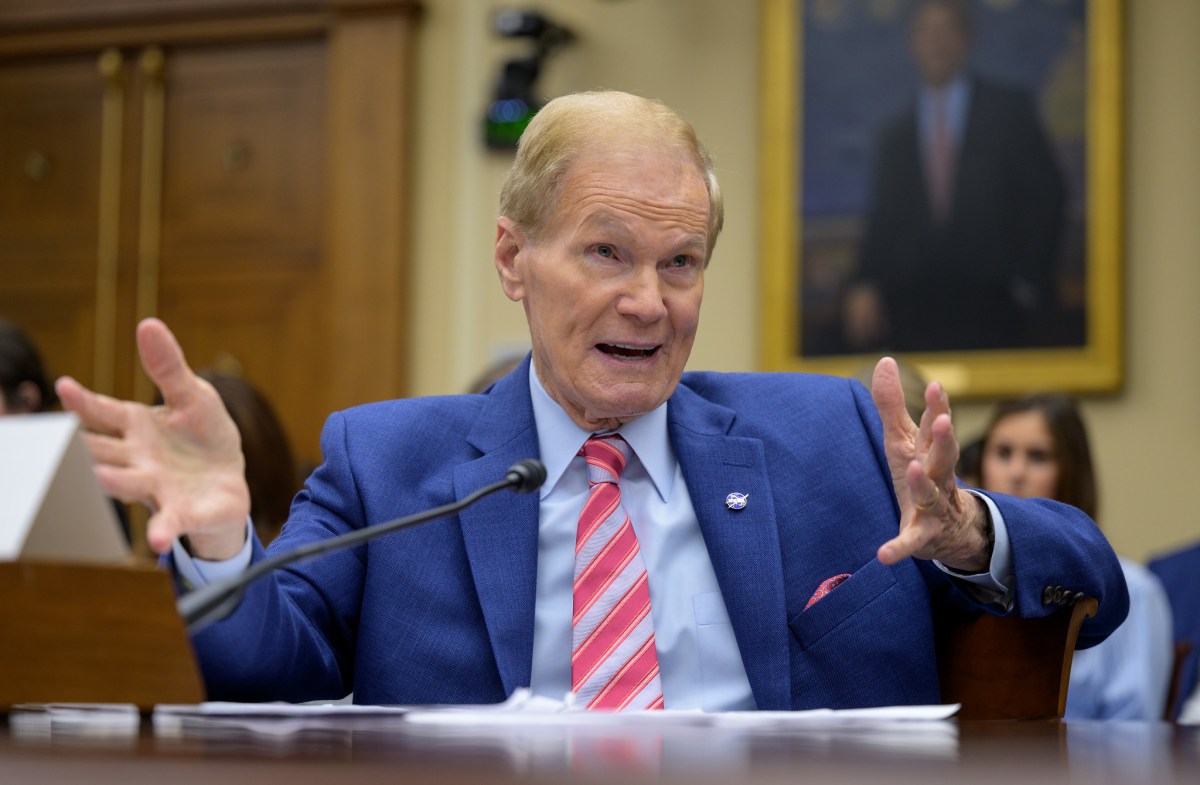WASHINGTON — NASA Administrator Bill Nelson told a House committee that budget caps forced cuts to agency programs while pleading with them to include money for a space station deorbit vehicle in a supplemental funding bill.
Testifying before the House Science Committee April 30, Nelson repeatedly told members of both parties when asked about cuts in the agency’s 2025 budget proposal in programs ranging from science missions to maintenance of NASA facilities that his hands were tied by overall spending caps.
The caps, in place for the 2024 and 2025 fiscal years, limit non-defense discretionary spending and were part of a deal enacted nearly a year ago in the Fiscal Responsibility Act to raise the debt ceiling. “These two years, ’24 and ’25, NASA has been cut between the two years $4.7 billion from our original request,” he said. “That’s going to have an effect on some of the contracts at all NASA centers.”
NASA, in its fiscal year 2024 budget request, sought $27.185 billion for the agency and projected requesting $27.729 billion in 2025. NASA received $24.875 billion in the final 2024 appropriations bill enacted in March and is requesting $25.384 billion in 2025, a difference of nearly $4.7 billion from the original projections last year.
Nelson repeatedly returned to those spending caps when asked to reconsider cuts to specific programs, suggesting the only relief will come after the caps expire in fiscal year 2026. “I’m hoping that when you get to ’26, Congress may see the wisdom of some of these programs,” he said.
He called on members, though, to support full funding for the United Stated Deorbit Vehicle (USDV), a spacecraft NASA plans to develop to handle the final deorbiting of the International Space Station at the end of the station’s life, though a supplemental spending bill.
NASA had requested $180 million for USDV in its fiscal 2024 budget request and $109 million for it in the 2025 request. Nelson, though, told members NASA wanted to get full funding for the vehicle as part of a domestic emergency supplemental spending bill proposed by the White House last fall for disaster relief and other purposes, but yet to be considered by Congress.
“Why is it an emergency?” he said. “Because we don’t know what Vladimir Putin is going to do.”
He suggested Russia might terminate its role on the ISS early or decide not to participate in the controlled deorbiting of the station. “We don’t know what the president of Russia is going to do, and we could be in an emergency situation that we have to get this structure that is as big as a football stadium down, and down safely, in 2031.”
“I am begging the Congress, in the next emergency appropriations bill,” he said later in the hearing, to include full funding for the USDV. That total was $1.5 billion, he said, significantly higher than when NASA announced the USDV in March 2023, when the agency projected spending “a little bit short of $1 billion” on the vehicle. NASA has yet to award a contract for building the USDV.
On Mars Sample Return (MSR), Nelson said he remained optimistic that industry and agency teams would be able to come up with approaches that will reduce the overall cost of the program, estimated to be as high as $11 billion, and allow samples to be returned sooner than 2040, the current estimate from a recent agency review.
He said he had talked the day before the hearing with Laurie Leshin, director of the Jet Propulsion Laboratory, which is undertaking its own reviews of MSR. “They are quite excited about coming up with new ideas,” he said of JPL, suggesting that those ideas involved the use of smaller landers with the same “skycrane” landing system that successfully landed the Curiosity and Perseverance rovers.
While NASA is looking for ideas to reduce the cost of MSR, the agency has not set a goal for its internal or external studies, which agency officials said was a deliberate omission. “We want real analysis, we want real solutions and we want to know what they’re really going to cost so we can make informed trades,” Sandra Connelly, deputy associate administrator for science at NASA, said at an April 24 meeting of the Mars Exploration Program Analysis Group.
“The cost should not exceed somewhere in the $6 billion range,” Nelson said of MSR at the hearing, citing past independent reviews of the program.
Nelson also responded to a recent report that NASA was reconsidering the plan for the Artemis 3 mission, which currently will be the first crewed lunar landing of the effort. According to the report, NASA was studying having Orion dock with a SpaceX Starship lunar lander in Earth orbit, deferring a landing to a later mission.
“The article you are referring to is speculation: what happens if they’re not ready?” he said when asked about it by the committee’s chairman, Rep. Frank Lucas (R-Okla.) “Well, naturally, people think about these things, but the plan is to land.”
He said SpaceX was under contract to carry out that landing in September 2026, NASA’s current no-earlier-than date for Artemis 3. “But if they’re not ready,” he said later in the hearing, “obviously we’re not going to fly.”
